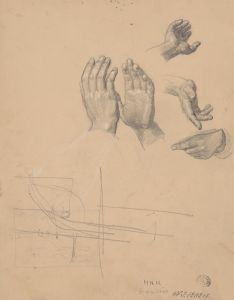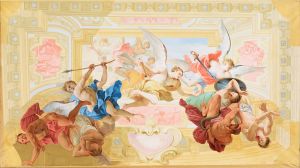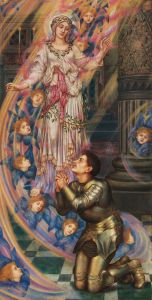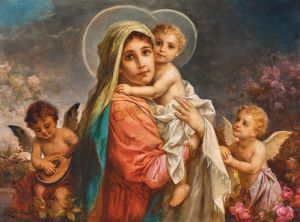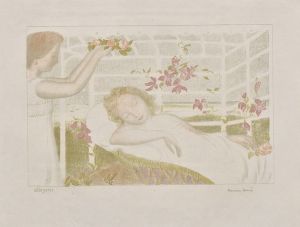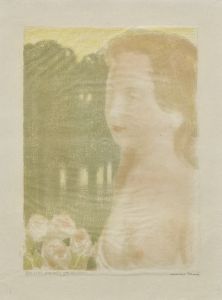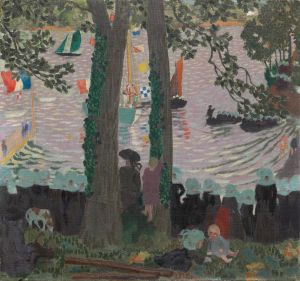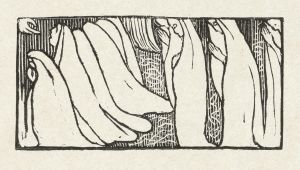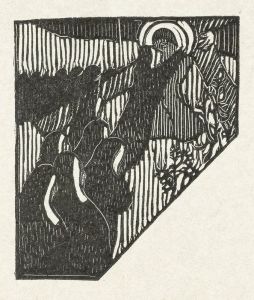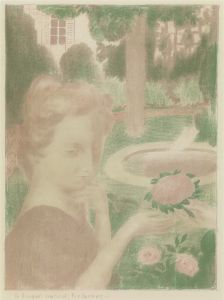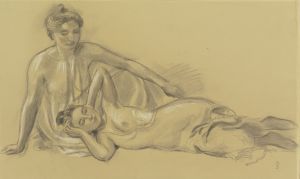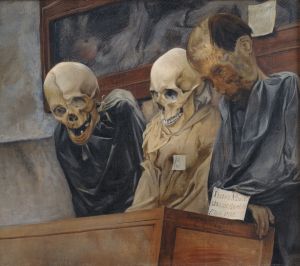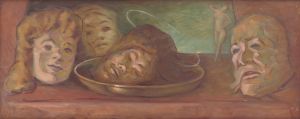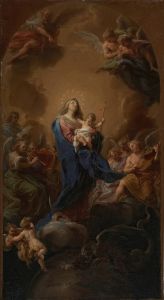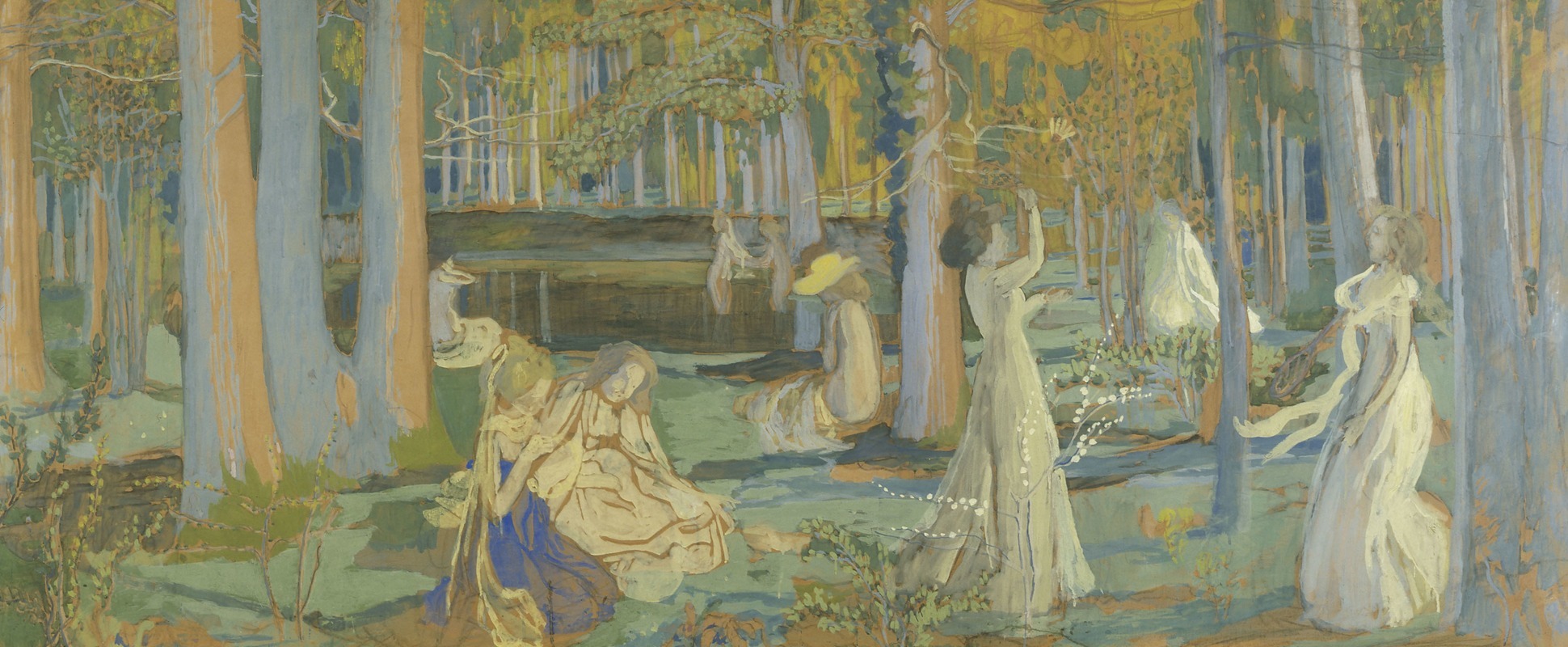
Esquisse pour le ‘Jeu de volant’ ; Le bois sacré
A hand-painted replica of Maurice Denis’s masterpiece Esquisse pour le ‘Jeu de volant’ ; Le bois sacré, meticulously crafted by professional artists to capture the true essence of the original. Each piece is created with museum-quality canvas and rare mineral pigments, carefully painted by experienced artists with delicate brushstrokes and rich, layered colors to perfectly recreate the texture of the original artwork. Unlike machine-printed reproductions, this hand-painted version brings the painting to life, infused with the artist’s emotions and skill in every stroke. Whether for personal collection or home decoration, it instantly elevates the artistic atmosphere of any space.
Maurice Denis was a prominent French painter and a key figure in the Symbolist and Nabi movements. His work, "Esquisse pour le ‘Jeu de volant’ ; Le bois sacré," is an example of his unique approach to art, which often combined religious themes with a modern aesthetic. Denis was known for his belief that a painting, before being a warhorse, a nude woman, or some anecdote, is essentially a flat surface covered with colors assembled in a certain order. This philosophy is evident in his work, where form and color take precedence over realistic representation.
"Esquisse pour le ‘Jeu de volant’ ; Le bois sacré" translates to "Sketch for the 'Game of Shuttlecock'; The Sacred Wood." This piece is a preparatory sketch, indicating that it was part of Denis's process in developing a larger or more detailed work. The title suggests a scene involving a game of shuttlecock, a pastime that could be associated with leisure and innocence, set against the backdrop of a sacred wood, which might imply a spiritual or mystical dimension.
Denis's work often explored themes of spirituality and the divine, and he was deeply influenced by his Catholic faith. This influence is reflected in his frequent use of religious symbolism and his interest in depicting scenes that evoke a sense of the sacred. The "sacred wood" in the title may allude to a place of spiritual significance, a common motif in Denis's oeuvre, where nature often serves as a setting for divine or mystical experiences.
The Nabi movement, of which Denis was a part, sought to break away from the naturalism that dominated the art world in the late 19th century. Instead, they emphasized the importance of the artist's subjective experience and the symbolic content of art. Denis's work is characterized by its decorative style, use of bold colors, and simplified forms, all of which are hallmarks of the Nabi aesthetic.
In "Esquisse pour le ‘Jeu de volant’ ; Le bois sacré," Denis likely employed these stylistic elements to convey a scene that is both visually engaging and rich in symbolic meaning. The sketch format suggests a work in progress, offering insight into Denis's creative process and his method of developing complex compositions from initial ideas.
Denis's contribution to modern art extends beyond his paintings; he was also a prolific writer and theorist. His writings on art theory and criticism helped shape the direction of modern art in the early 20th century. He advocated for a return to order and structure in art, which he felt had been lost in the chaos of Impressionism and Post-Impressionism.
Overall, "Esquisse pour le ‘Jeu de volant’ ; Le bois sacré" exemplifies Maurice Denis's approach to art, where the interplay of color, form, and symbolism creates a work that is both aesthetically pleasing and intellectually stimulating. Through this piece, Denis invites viewers to contemplate the relationship between the mundane and the sacred, a theme that resonates throughout his body of work.





